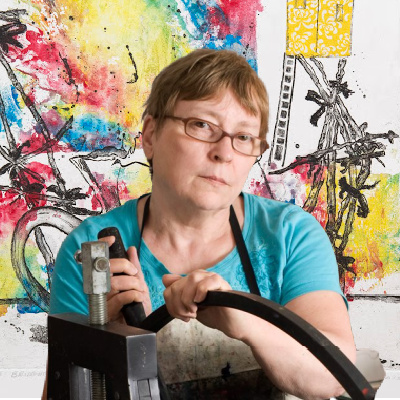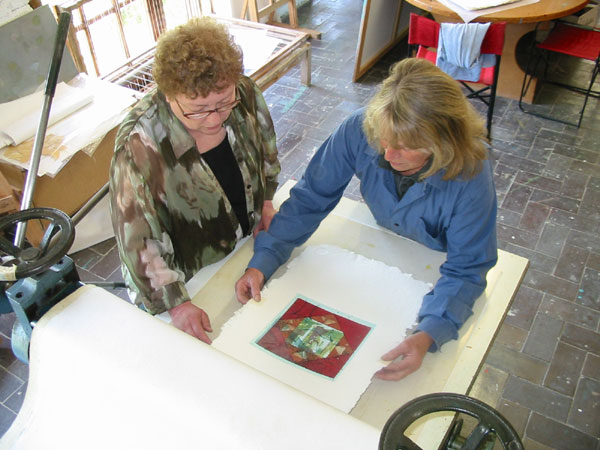In this series, we get to know the Artists behind the work with ten questions about their practice, their space, and their ideas. These are their Stories.
Audrey Feltham
Audrey Feltham, a seasoned artist with 30 years of experience in traditional print and fibre art, was born and raised in Southern Alberta. Influenced by her English and Norwegian grandparents, she values cultural traditions and embracing her heritage. After studying at Memorial University in Newfoundland, Audrey has traveled extensively, participating in residencies in printmaking and fibre art. Her work reflects a fusion of prairie upbringing and Maritime experiences, and exploring those diverse cultural connections.
When did you develop an interest in art?
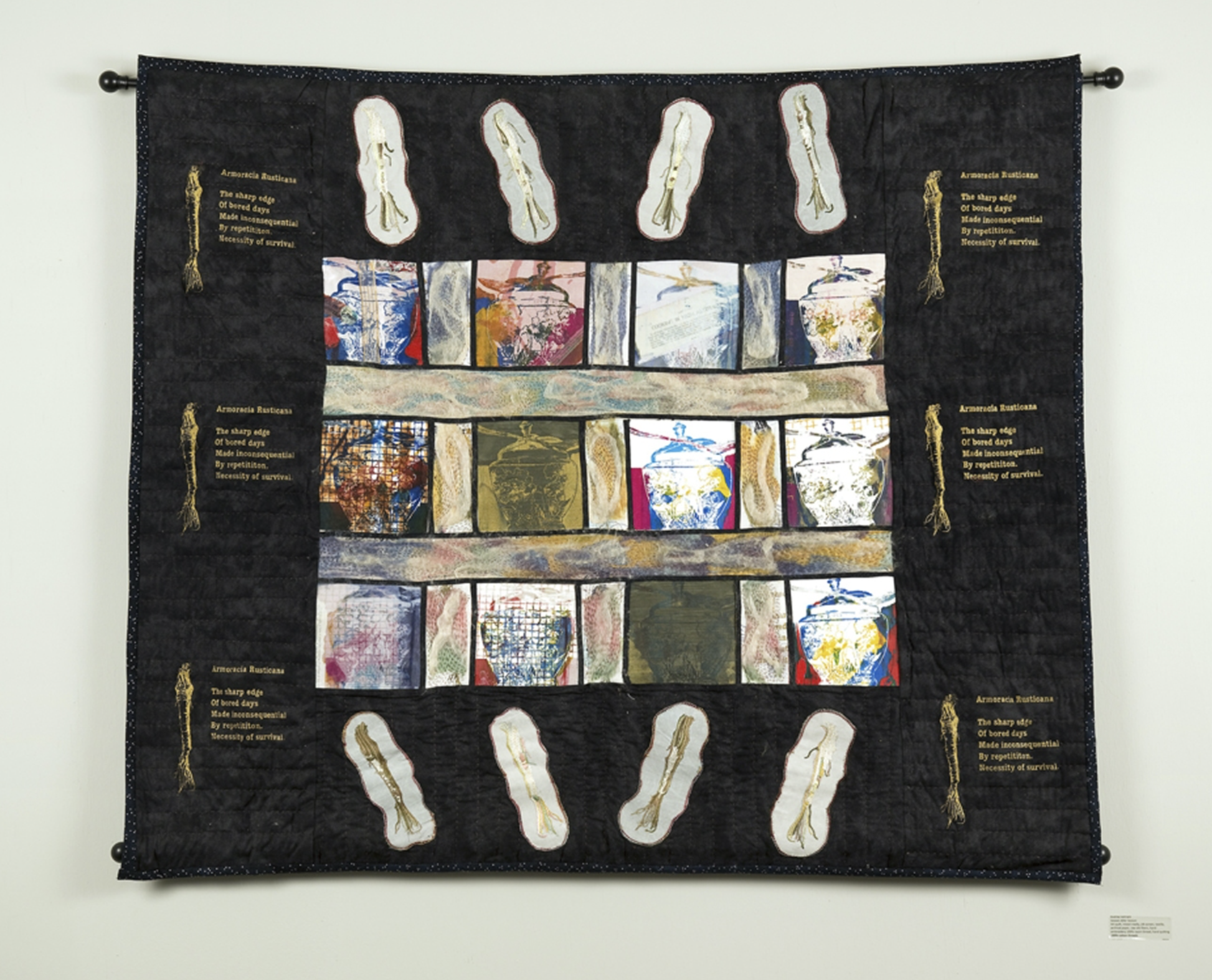
I have always had an interest in art, even as a child. I taught myself to paint when I was in high school and I learned watercolours on my own as a young adult. My paternal grandmother sparked my interest in fibre arts with instruction in embroidery and knitting/crochet as a young child.
Having studied English Language and Literature and Fine Art, how do you see these two disciplines intersecting in your creative process? How does literature inform your visual art and vice versa?
I see all art, even that which is not readily identifiable as object(s), as work that is narrative. Whether art is representational or abstract, it all begins with deep feeling and a concept within the artist. Therefore, it is narrative and shares that with the written word. In order for Literature to be successful, it must not only voice some sort of narrative, but it also must create some sense of colour and space, as must visual art.
Tell us about your process when creating an artwork.
Process for me is something that evolves in the development of a work. While I do sometimes create working drawings, often my work starts with an idea and as I determine the media I think is most suited for that idea process takes over. My determination of media, whether it is etching, relief, screen, multi media or fibre art, is greatly determined by narrative I wish to create.
Could you share some insights into your experience of traveling for residencies in printmaking and fibre art? How have these experiences shaped your understanding of cultural interpretations of art practices?
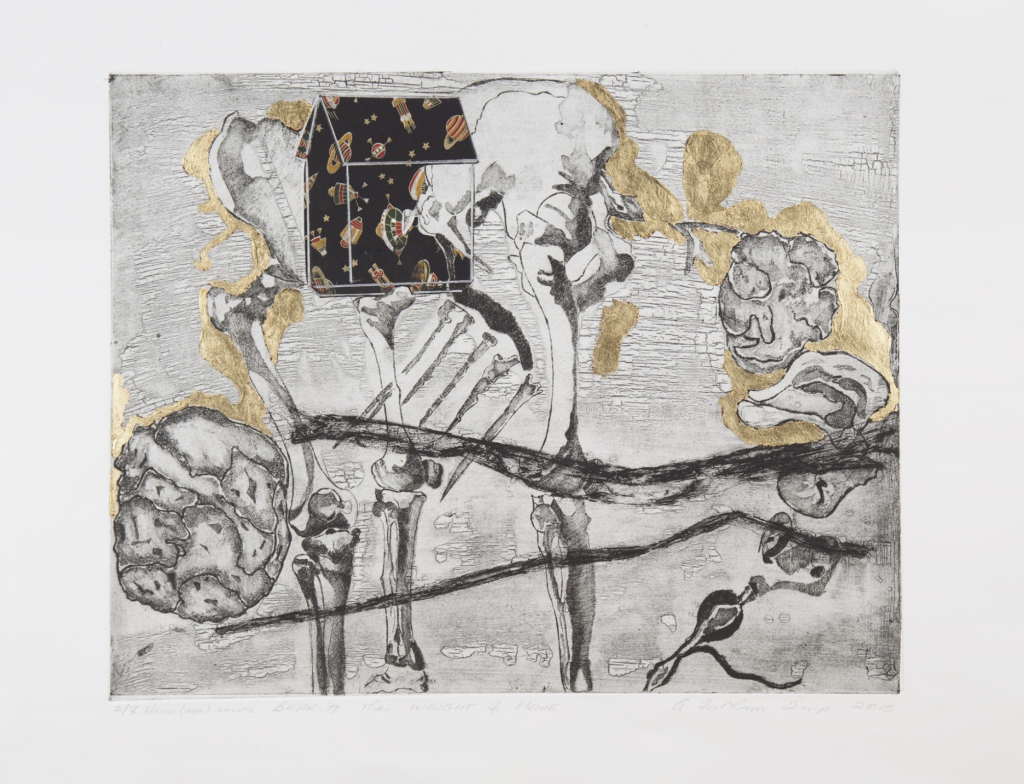
As a printmaker, working from my own studio, I had the luxury of space and time whenever I wished to create. That is a bonus. However with that comes a negative. When you are isolated in your studio you have little feedback and interaction with other artists using the same materials and methods. Printmaking particularly, I believe, benefits from seeing the working methods and the results of others using the same practice. So I deliberately looked for residencies that would take me out of my comfort zone. Residencies are competitive and not easy to come by, and they are expensive. While you will have a studio/workshop space, you must provide for your travel, accommodation, materials. I have been fortunate enough to receive grants from both the Canada Council and the Newfoundland and Labrador Arts Council as well as specific funding for specific residencies to allow me to make these happen. Residencies really do open your eyes to the culture of the area you are working in. Each geographic area develops from economic necessities and these bear witness in the art that is made in the area. Travelling to Northern England, for example, made me realize how much the art of that area is indebted to the development of early cottage crafts industry in wool and dyes, and latter to the take over of those industries by the Industrial Revolution. The residency in Ireland opened by mind to the ancient history in which so much of Ireland’s literature and art is imbrued.
Where do you find inspiration?
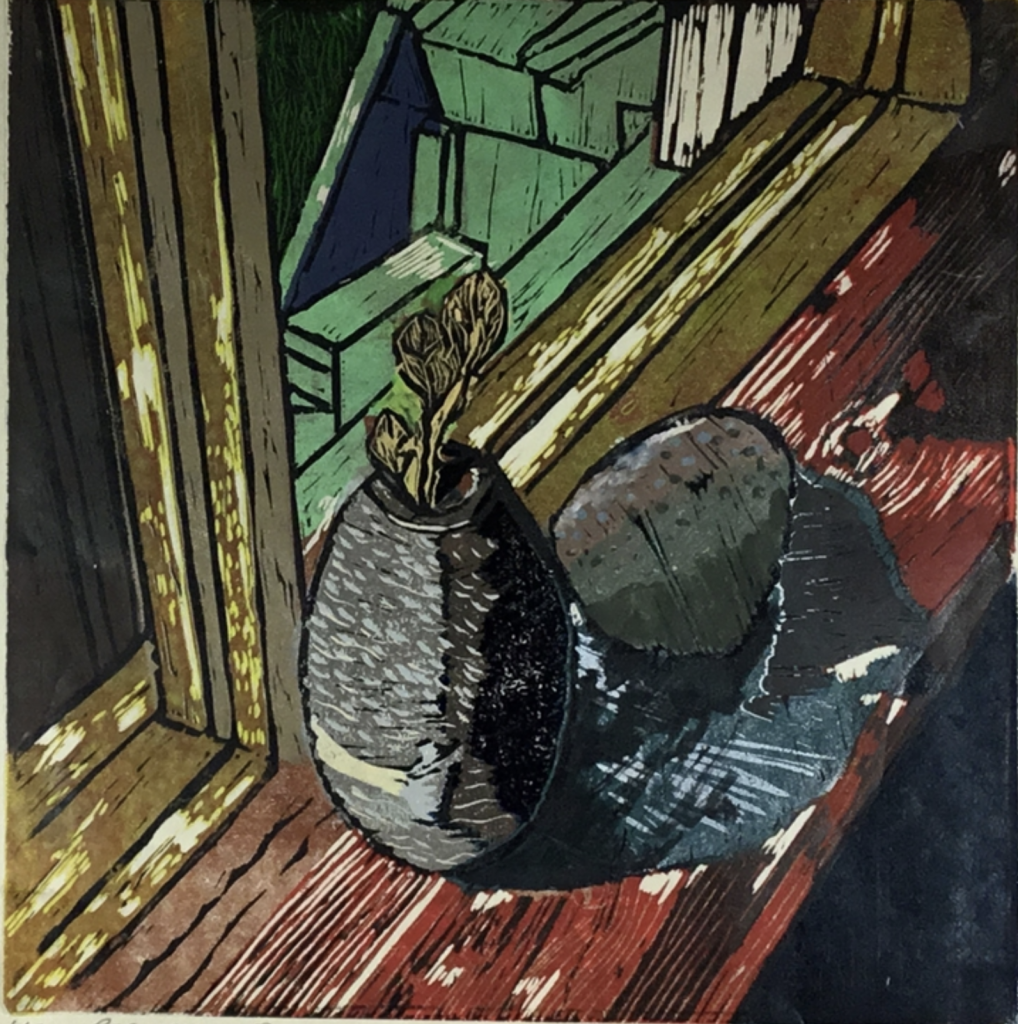
Inspiration comes from my own history as a third generation Canadian as well as everyday objects that carry with them some sense of culture.
What do you listen to when you work?
Ironically I do not listen to music when I work. I find it distracting. I always thought I was very weird in that regard until I read that Henry Moore also was unable to listen to music as he worked.
If given the opportunity, what is your dream project?
If given the opportunity I would love to do a large installation collaborative piece with artists from varied cultures creating fibre art works, both 2-D and 3-D, dealing with the effects of corporate greed on their cultural identity.
What’s one item in your workspace you cannot live without?
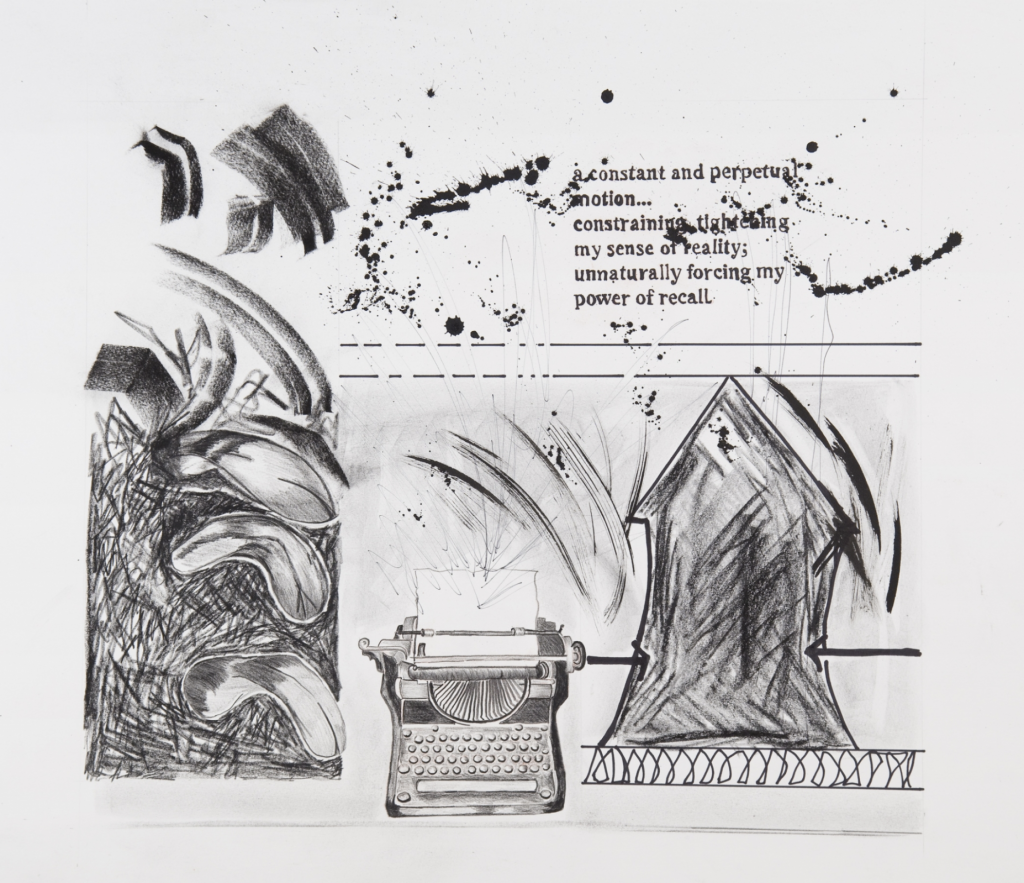
I can’t live without my etching tools or my relief tools and my brayers.
What would people be surprised to learn about you?
I think people would be surprised to learn that I am really a recluse. I am happiest when I can be by myself. I find it very difficult to do small talk and am very uncomfortable in situations where it is required of me to interact with people with whom I have no deep connection.
What is one thing you’ve been loving recently that you’d like to share?
I recently closed out my small craft part of my studio and I am happy to have more in depth studio time for myself for work which I consider to be of significant importance to me personally.
Do you want to be featured? Join Partial as a Pro artist and e-mail us at hello@partial.gallery. We’d love to share your work.
